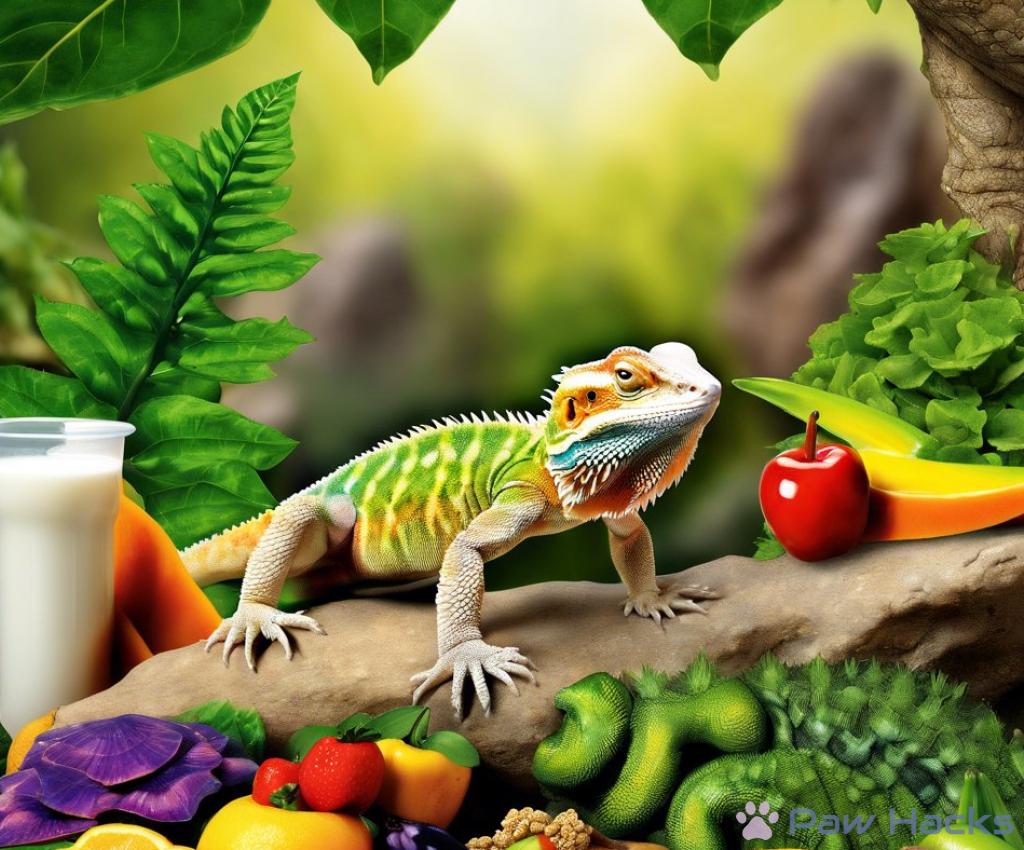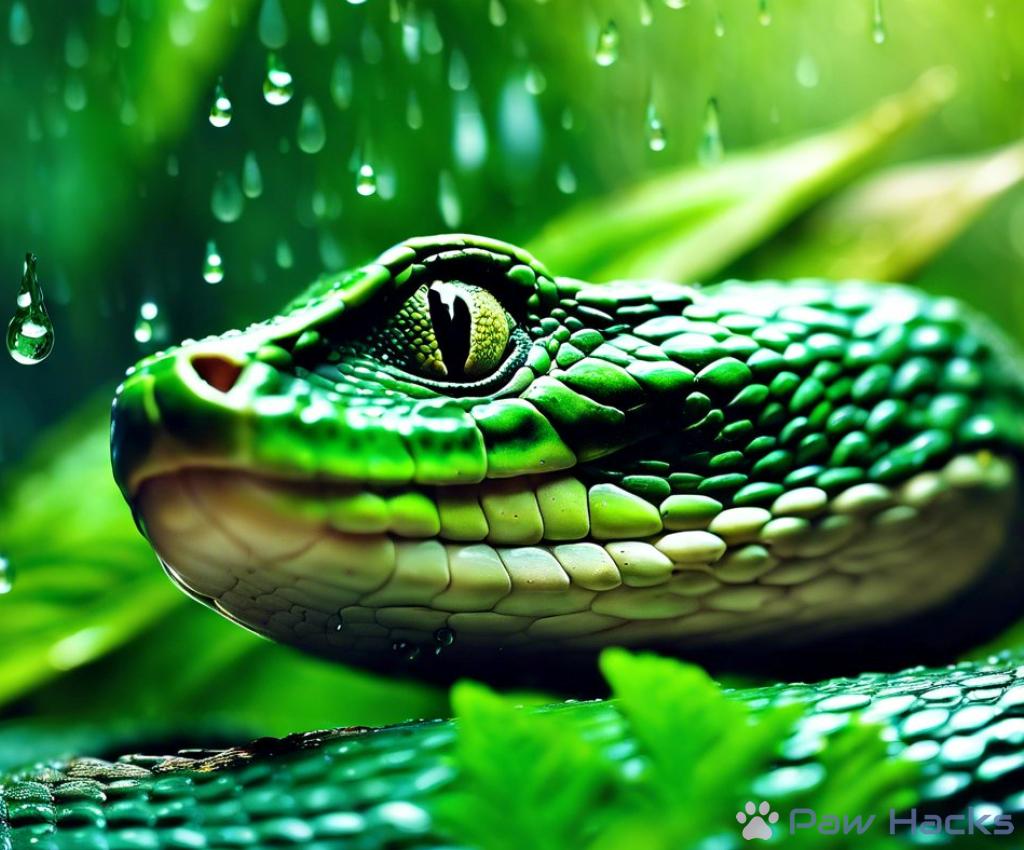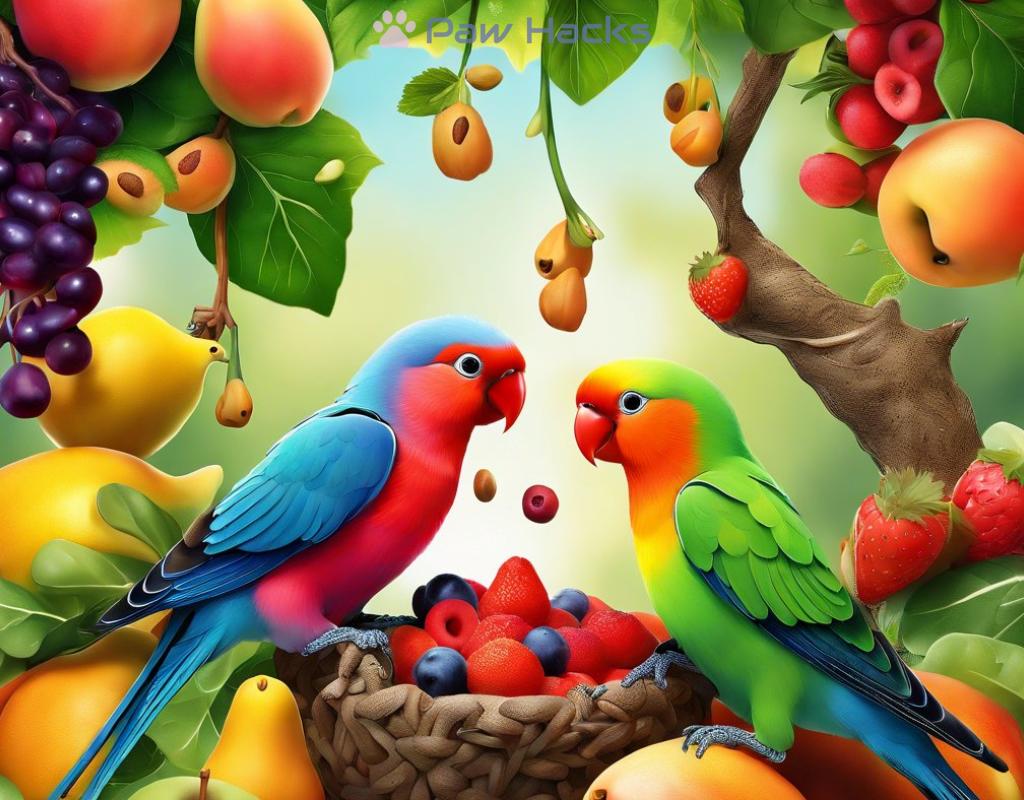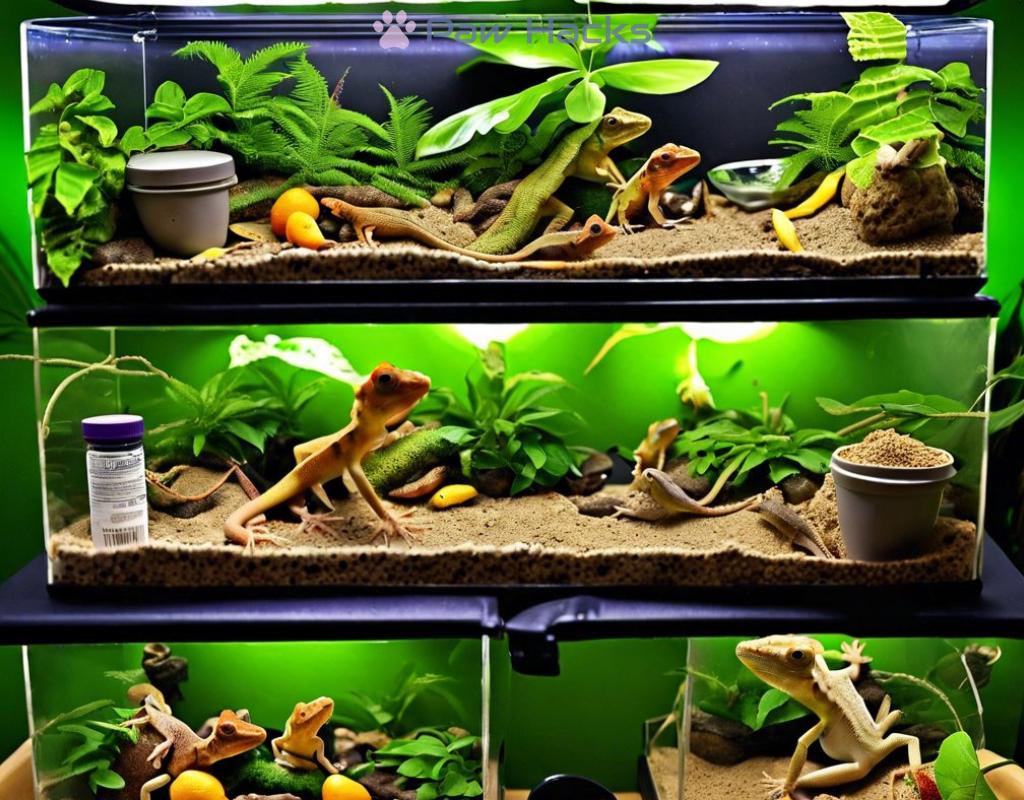Nutritional Support for Reptile Shedding
Essential Nutrients for Healthy Shedding in Reptiles

Shedding, or ecdysis, is a vital process for reptiles, allowing them to grow and remove old or damaged skin. This process can be stressful for reptiles, and proper nutritional support is crucial to ensure they shed effectively and healthily. Let’s delve into the essential nutrients that play a significant role in this natural cycle.
To support healthy shedding, reptiles require a balanced diet rich in specific nutrients. These nutrients help maintain skin health and promote easier shedding. Below is a list of the essential nutrients along with their benefits:
- Calcium: Vital for bone health and skin integrity, calcium aids in the development of a strong exoskeleton.
- Vitamin A: Essential for skin health and cellular function, vitamin A prevents issues like retained shedding.
- Omega-3 Fatty Acids: These help maintain skin hydration and elasticity, making the shedding process smoother.
- Hydration: While not a nutrient in the traditional sense, adequate water intake is crucial for skin moisture and flexibility.
Different reptiles have varying dietary needs. Below is a comparative table highlighting the essential nutrients found in common reptile food sources:
| Food Source | Calcium Content | Vitamin A Content | Omega-3 Fatty Acids |
|---|---|---|---|
| Leafy Greens | High | Moderate | Low |
| Insects | Moderate | High | High |
| Fruits | Low | High | Moderate |
| Commercial Pellets | Varies | Varies | Low |
The Role of Hydration in the Shedding Process

When it comes to the health of reptiles, hydration is often overlooked despite its crucial role in various biological processes, including shedding. Proper hydration not only aids in the shedding of old skin but also ensures that the reptile’s body functions optimally during this critical time. Understanding the significance of water intake can make a substantial difference in your reptile’s shedding experience.
Water is essential for maintaining skin moisture and flexibility, both of which are vital for a smooth shedding process. When reptiles are well-hydrated, their skin remains pliable, making it easier for them to shed old layers without distress. In contrast, dehydration can lead to dry, cracked skin, resulting in complications such as retained shedding, which can pose serious health risks.
Being able to identify the signs of dehydration is crucial for reptile owners. If you notice any of the following symptoms, it may be time to reevaluate your pet’s hydration status:
- Sunken Eyes: A common indicator, sunken eyes can signal that your reptile is not getting enough water.
- Dry Skin: A lack of moisture can lead to rough, flaky skin, making shedding more difficult.
- Reduced Activity: Dehydrated reptiles may become lethargic and less active than usual.
To ensure your reptile is adequately hydrated, consider implementing the following strategies:
- Provide Fresh Water: Always have clean, fresh water available for your reptile to drink.
- Monitor Humidity Levels: Depending on the species, maintaining appropriate humidity levels in their habitat is crucial for promoting hydration.
- Use Soaking Sessions: For some reptiles, soaking in shallow water can be beneficial. This helps them absorb moisture directly through their skin, aiding in the shedding process.
By incorporating these hydration strategies into your reptile care routine, you can help facilitate a healthier shedding process, ultimately improving your pet’s overall well-being.
Creating a Balanced Diet: Foods that Support Shedding
Providing a balanced diet is essential for reptiles, especially during the shedding process. A well-rounded diet not only aids in the physical aspects of shedding but also promotes overall health. By incorporating the right foods into your reptile’s diet, you can ensure that they receive the necessary nutrients to facilitate a smooth shedding experience while also supporting their long-term well-being.
To create an effective diet for your shedding reptile, focus on incorporating specific food groups that are rich in the essential nutrients previously discussed. Here are some key categories to consider:
- Leafy Greens: Dark, leafy greens like collard greens, kale, and dandelion greens are excellent sources of calcium and vitamins, contributing positively to skin health.
- High-Quality Insects: Live insects such as crickets, mealworms, and roaches provide not only protein but also omega-3 fatty acids, crucial for skin elasticity and hydration.
- Fruits and Vegetables: While fruits should be given in moderation, options like blueberries and squash can provide vitamins that support skin regeneration during shedding.
A diverse diet is key to ensuring that your reptile receives all the nutrients it needs. By mixing different food items, you can create a balanced and enjoyable diet for your pet. Experiment with various combinations of leafy greens, insects, and occasional fruits to find what your reptile prefers. Keep in mind that some reptiles might have specific preferences or dietary restrictions based on their species, so always research what is best for your pet.
In addition to fresh foods, considering supplements can be beneficial for reptiles, especially during shedding. Calcium and vitamin D3 supplements can help ensure that your pet’s skeletal and skin health is supported, particularly if their diet lacks sufficient sources of these nutrients. Always consult with a veterinarian before adding supplements to your reptile’s diet to avoid over-supplementation.
The Importance of Vitamins and Minerals for Shedding Success
Shedding is a critical phase in the life of reptiles, impacting their growth and overall health. Adequate vitamins and minerals play a pivotal role in ensuring this process occurs smoothly. Without these essential nutrients, reptiles may experience complications that can lead to discomfort or severe health problems. Understanding the significance of these nutrients can help reptile owners make informed dietary choices, enhancing their pets’ shedding experience.
Vitamins, particularly vitamin A, are indispensable for skin health. This vitamin aids in the maintenance of epithelial tissues, which are crucial during the shedding process. A deficiency in vitamin A can result in retained skin, where old skin does not shed properly, leading to potential infections. Moreover, vitamin A contributes to the overall immune system function, ensuring that your reptile can better withstand the stresses associated with shedding.
In addition to vitamins, minerals such as calcium and phosphorus are essential for maintaining the structural integrity of the skin and bones. Calcium, in particular, is vital for the formation of healthy skin cells. It ensures that the skin remains robust yet flexible, which is crucial for successful shedding. A well-balanced ratio of calcium to phosphorus is necessary to promote optimal health; too much phosphorus can inhibit calcium absorption, leading to potential deficiencies that affect shedding.
Moreover, the role of trace minerals, such as zinc and selenium, should not be overlooked. These minerals are involved in various biochemical processes, including skin repair and regeneration. Zinc, for instance, is known to support the healing of wounds and is critical for the synthesis of proteins that form the skin. A deficiency in these trace minerals can result in slower shedding processes and compromised skin health.
To sum up, the integration of a balanced array of vitamins and minerals into your reptile’s diet is essential for successful shedding. By focusing on these nutrients, reptile owners can help their pets navigate the shedding process with greater ease and comfort. It’s crucial to evaluate the dietary sources available and ensure that they meet the specific needs of your reptile species, ultimately fostering a healthier and happier life.
How to Recognize Nutritional Deficiencies During Shedding
Shedding is a natural and essential process for reptiles, but it can be hindered by nutritional deficiencies. Recognizing these deficiencies during shedding is crucial for the health and well-being of your reptile. When reptiles lack specific nutrients, they may exhibit certain signs that can help owners identify underlying issues. Understanding these indicators can empower pet owners to take appropriate action, ensuring their reptiles have the nutritional support they need during this critical phase.
Observing your reptile closely during shedding can reveal whether they are facing nutritional challenges. Some common signs include retained shed, which occurs when the old skin does not come off entirely. This can indicate a lack of adequate hydration and essential vitamins such as vitamin A. Additionally, if you notice flaky or dry skin, it may suggest a deficiency in omega-3 fatty acids or essential oils that maintain skin elasticity. Furthermore, reduced activity levels or lethargy can signal a broader nutritional issue, potentially affecting their metabolism and overall vitality.
Behavioral changes can also provide insights into your reptile’s nutritional status during shedding. For instance, if your reptile becomes more irritable or hides more than usual, it could be an indication of discomfort stemming from inadequate nutrition. A decrease in appetite during shedding can also be a red flag. If your reptile refuses to eat or shows disinterest in their favorite foods, it might be time to reevaluate their dietary intake and ensure they receive a balanced mix of nutrients. Pay attention to these behavioral cues, as they may guide you in addressing any deficiencies in their diet.
In summary, recognizing nutritional deficiencies during shedding is vital for the health of your reptile. By observing physical signs and behavioral changes, you can take proactive steps to ensure your pet receives the necessary nutrients for a smooth shedding process. Regularly reviewing your reptile’s diet and consulting with a veterinarian can help maintain their well-being and promote a healthier shedding experience.
Share this content:



